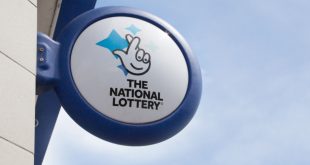
US wagering to date has been dominated by conservative marriages between US casino giants and established European sportsbook operators. Flipping the script, last January Penn National acquired controversial US sports publisher Barstool for $450m, stating its intent to develop America’s dominant mass-market sportsbook proposition.
Scott Longley explains why if you are still a ‘sportsbook romantic’… you should really care about Penn and Barstool…
______________
Ground zero for Dave Portnoy’s big sports-betting adventure would appear to be Pennsylvania. Or, rather, Barstool shareholder Penn National – which snapped up a 36% stake in the media business in January and can move that to 50% within three years – has identified Pennsylvania as the launch state for its new sports-betting venture, the Barstool Sportsbook.
Anticipation of the launch is currently hitting a peak. As a note from the analyst team at Morgan Stanley suggested in late August, the launch is likely to provide some significant disruption at the top of the tree in US sports betting. “Based on Barstool’s significant awareness/engagement, we forecast it achieving 10% market share of US sports betting,” the MS team wrote.
For Neale Deeley, interim MD Betting US at Sportradar, it is significant that the debut will be in Pennsylvania. “Penn and Barstool Sportsbook don’t need to win in New Jersey, where the market is already very crowded,” he points out. “If you look at Penn’s sports-betting pitch, you can see that it is a well-established gaming operator across more than a dozen states. But what it didn’t have – until now – was a recognised brand name. They have that now with Barstool.”
Kevin Vonasek, a principal with Vonasek Gaming Group and previously vice-president of business development for the Americas at Scientific Games, agrees that unlike competitors such as Caesars or MGM, Penn was lacking any kind of national gaming brand. “Penn National had grown through acquisitions with individual historic property brand names,” he points out. “Penn itself was more of a corporate brand. In their situation, they definitely needed a national brand.”
Barstool’s Baggage
In the fevered merry-go-round of sports-betting partnerships and media deals in the US, Penn National’s arrangement with Barstool still stands out. Partly this is down to Barstool’s existing audience metrics; nearly 15 million unique actives, over 38 million Instagram followers, 18.2 million Twitter followers, 9.2 million podcast listeners. And a substantial percentage of these users – according to the research over 60% – have a propensity to bet on sports.
But the anticipation regarding the upcoming launch is also down to the high-profile of the personalities involved. In Dave Portnoy – or ‘Davey Day Trader’ as he became known during lockdown when he pivoted to giving a running commentary on his stock trading activity – and others Barstool has a collection of personalities around which the brand is “literally built”, says Keith McDonnell, principal consultant at KMi Gaming.
“The Barstool audience is built around this notion of anything goes and the brand loyalty they have developed spreads across a far larger demographic than any of the other brands or organizations,” he adds. “Barstool started as a media company and most people who don’t have a clue about sports betting or DFS have heard of the brand or at least consumed some form of their content. That can’t be said for DraftKings and FanDuel.”
Barstool represents a different form of media partnership compared to what we have seen before elsewhere, notably in the UK with Sky Bet and to a lesser extent with the recent Sun newspaper sports-betting offering,” says Deeley.
“Barstools’ spin is different to the media-led deals we have seen in Europe,” he adds. “Sky’s brand was sports broadcasting while something like the Sun was a newspaper that happened to have a sports section. The Barstool/Penn tie-up is very different in nature.”
Come to the execution
The piece of the puzzle which is not yet visible is the actual Barstool Sportsbook app itself. It was heavily trailed by Penn National chief executive Jay Snowden on the company’s second-quarter earnings call with analysts who admitted the company would get “one chance to make a first impression.”
“This is a heck of a time to be launching an app,” he added. “We are very bullish how our app is going to compare and we’re excited because we are going to launch a very competitive product.”
McDonnell points out that in a competitive space, Barstool Sportsbook will be compared to the best immediately. “They have little room and time for error,” he says. “With such an elaborate partnership consumers will be expecting a lot from both brands.”
“The brand alone is not going to drive the traffic,” says Vonasek. “They do have the marketing expertise that comes from Penn and the Barstool team is great at delivering content but they will need to have brought on product specialists who can tie it all together.”
This all comes at a cost, of course, and the one certainty is this all the efforts being put into sports-betting by Penn National and everyone else will have an impact on the bottom line. As Morgan Stanley concluded: “The industry, in general, has also become more competitive, with numerous peers raising capital and operators looking to take first-mover advantage, so near-term losses could be much higher than expected.”









